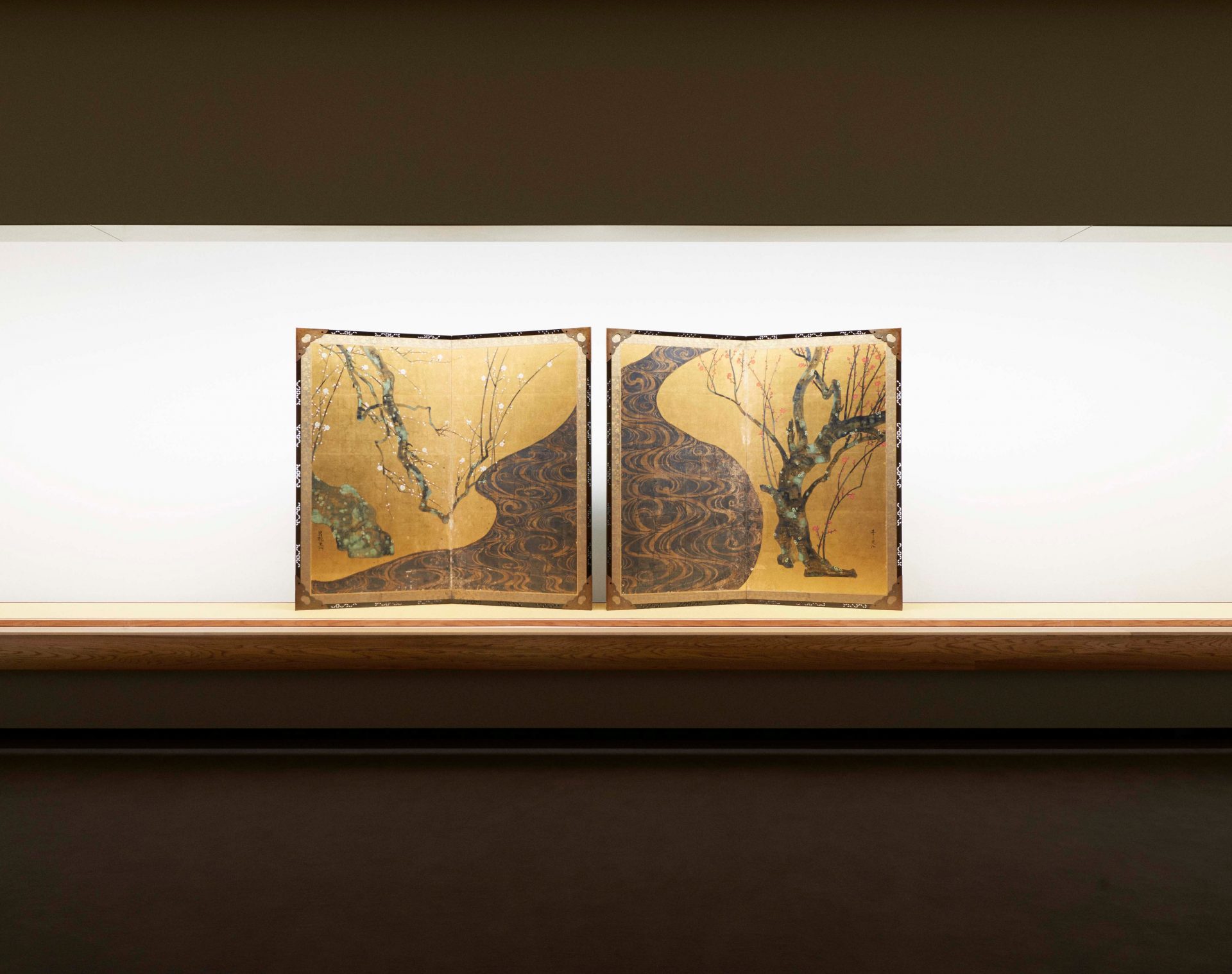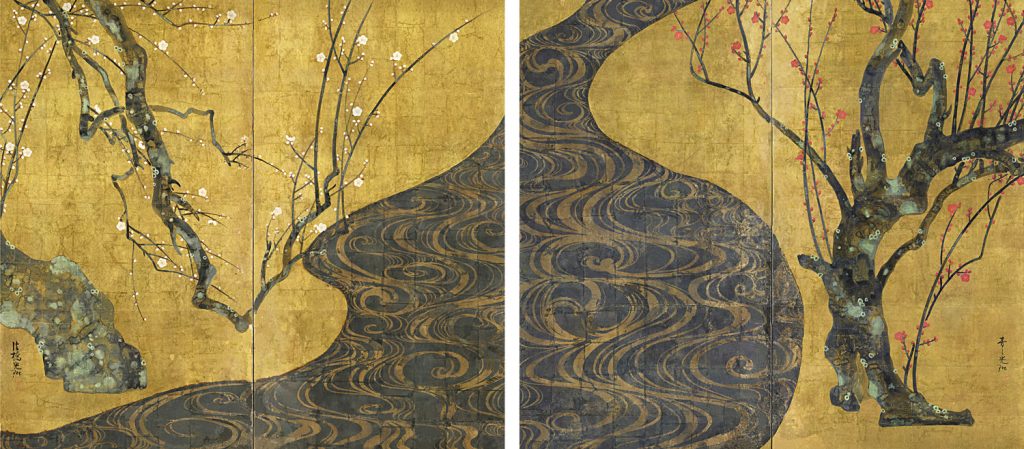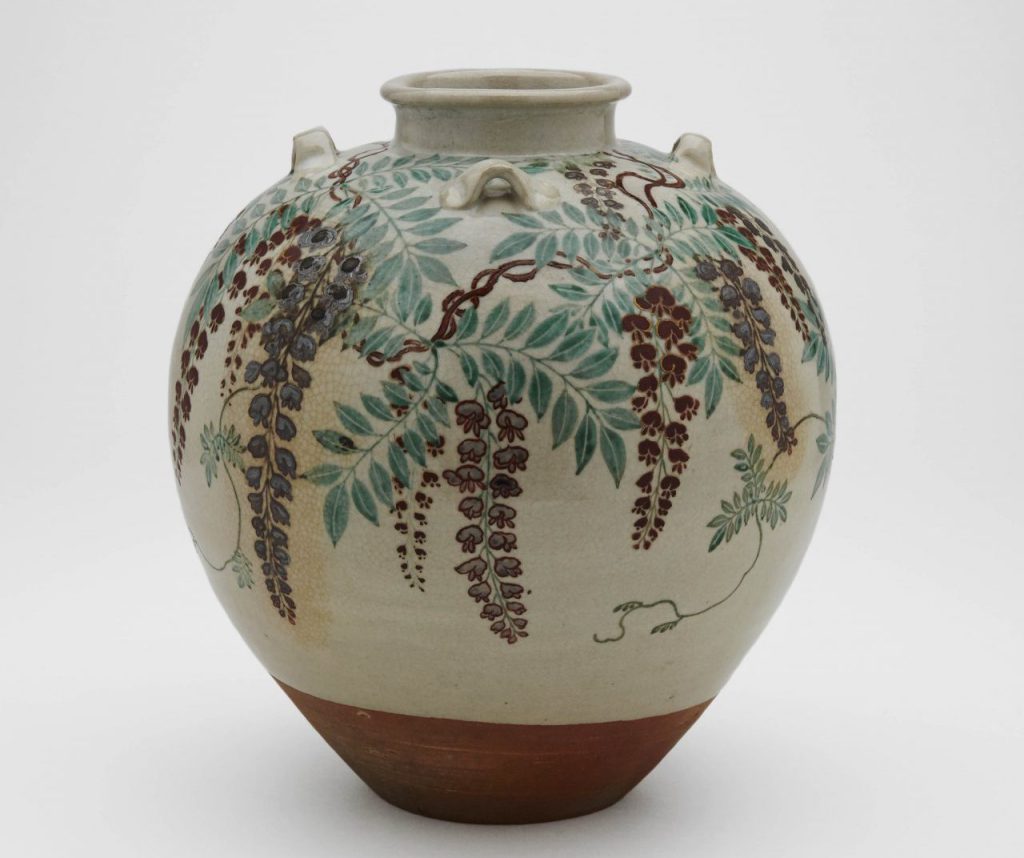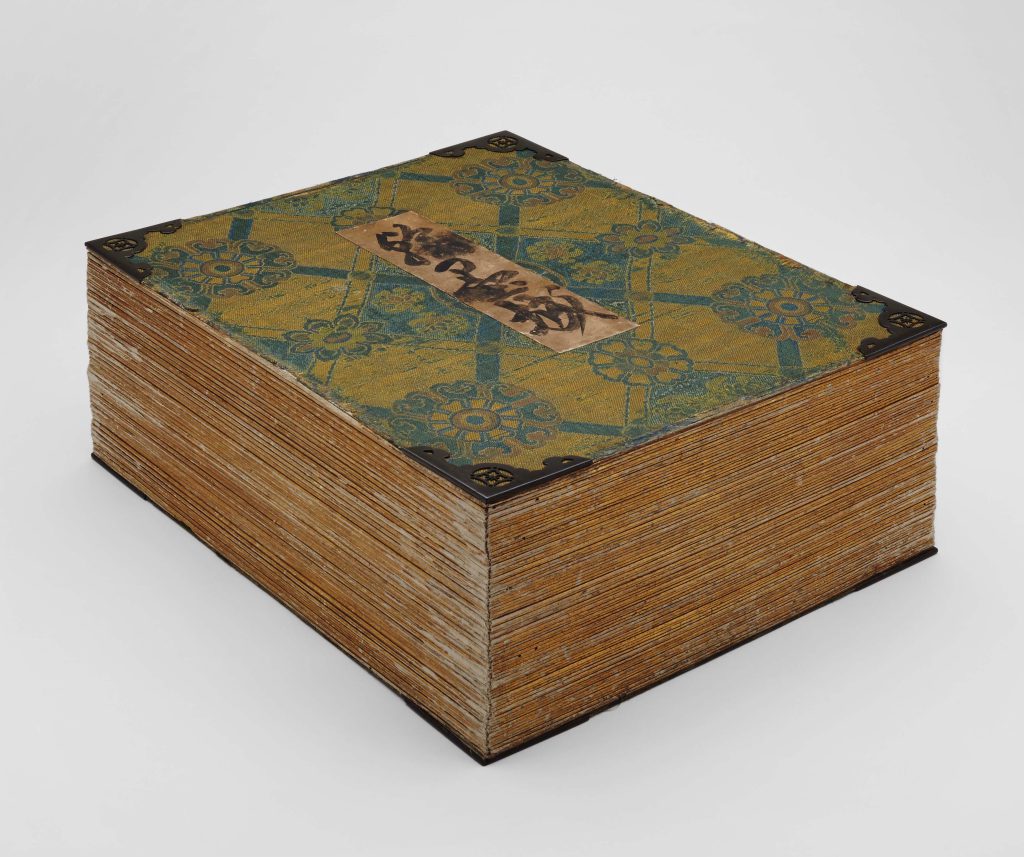Exhibitions
MOA Museum of Art Collection Part I
2022.01.28(Fri) - 2022.03.27(Sun)
Celebrating the 40th anniversary

Overview
Celebrating its 40th anniversary, the museum presents an exhibition with select masterpieces from its collection mostly compiled by the founder Okada Mokichi (1882-1955). Among the highly acclaimed works of Oriental art from Japan, China and other countries in Asia is the Red and White Blossoms by Ogata Kōrin, a pair of uni-fold screens, which is widely recognized as being the artist’s most celebrated masterpiece. The two plum trees—red and white—arranged asymmetrically against a gold-leafed background frame a decorative designs of stylized plum blossoms and water flow.
The Tea-leaf Jar with a design of Wisteria by the legendary pottery artist of Kyoto ware Nonomura Ninsei and the Tekagami Kanbokujō, one of the three best known calligraphic albums, are also on display. These three National Treasures are joined by select masterpieces, including the Lady under a Tree and the Illustrated Sutra of Past and Present Karma as well as the Cosmetic Box in Maki-e with Landscape and Figure Design , and the Standing Statue of Shō Kannon Bosatsu (Avalokitesvara), each representing different genres of art. Also to be enjoyed are the blooming plum trees in the precinct, which add a seasonal flavor to your visit.
◆Highlights◆

The Red and While Plum Blossoms by Ogata Kōrin (National Treasure)
It is widely known that Kōrin, while inspired by the works of Tawaraya Sōtatsu, developed his own artistic style which was so unique that its influence crossed the oceans. It is eloquently evident in the designs of the red and white plum trees, patterned petals, and flowing water, that embellish the screens. While the red plum is depicted in full view, the white plum swerves out of the canvas, forming an asymmetrical contrast. The water in the middle follows an exquisite curving line. The plum flowers without outlines, the unique layout of buds, the mossy tree trunks rendered using tarashikomi (by smudging wet ink), and the organic pattern that expresses the current—all these unique components together unfold a very dynamic and highly decorative design on the screen, and culminate into a masterpiece that showcases the rich and sophisticated artistry with which Kōrin enchanted the world. The signature on the right screen is Seisei Kōrin, and inscription on the left is Hokkyō Kōrin. Both screens have a round seal which reads “Hōshuku.” This is believed to be one of Kōrin’s last creations.
 Tea-leaf Jar with a design of Wisteria by Nonomura Ninsei (National Treasure)
Tea-leaf Jar with a design of Wisteria by Nonomura Ninsei (National Treasure)This jar is considered to be Nonomura Ninsei’s ultimate masterpiece. It embodies the refined aesthetic culture of the 18th-century Kyoto. The immaculate details are astounding—the wisteria is ingeniously distributed over the body of warm white base, and the flowers and vines are outlined variously in red, purple, gold and silver while the leaves even show capillaries. The well-balanced body is thrown astonishingly evenly in thickness. The motif comfortably matches the elegant form of the jar. A large branding of his name “Ninsei” is marked on the bottom. This jar was previously held by the Kyōgoku family of the Marugame domain (present-dayKagawa prefecture).
 Tekagami “Kanbokujō” (National Treasure)
Tekagami “Kanbokujō” (National Treasure)The classical calligraphic album Tekagami Kanbokujō is a compilation of highly acclaimed calligraphic work, deserving to be one of the three most accomplished writings in Japan, along with Moshiogusa and Minu Yo no Tomo, today housed in the Kyoto National Museum and the Idemitsu Museum of Arts, respectively. It is considered to be one of the earliest calligraphic albums ever collated. Record shows that it served Kohitsu Ryochu (1655–1736), an appraiser of classical calligraphic work, before being acquired by Masuda Donnou (1847–1938). The title “Kanbokujō” signifies a castle of brush and ink, aptly named for the finest collection of classical calligraphic treasures. It contains 311 fragments, originating between the eighth and fifteenth centuries.
